
Amateur astronomy is a hobby where participants enjoy observing or imaging celestial objects in the sky using the unaided eye, binoculars, or telescopes. Even though scientific research may not be their primary goal, some amateur astronomers make contributions in doing citizen science, such as by monitoring variable stars, double stars, sunspots, or occultations of stars by the Moon or asteroids, or by discovering transient astronomical events, such as comets, galactic novae or supernovae in other galaxies.

The Royal Astronomical Society (RAS) is a learned society and charity that encourages and promotes the study of astronomy, solar-system science, geophysics and closely related branches of science. Its headquarters are in Burlington House, on Piccadilly in London. The society has over 4,000 members, known as fellows, most of whom are professional researchers or postgraduate students. Around a quarter of Fellows live outside the UK.

The Kopernik Observatory & Science Center (KOSC), is a public observatory in Vestal, New York opened to the public on 16 June 1974 by the Kopernik Society of Broome County to commemorate the 500th anniversary of the birth of the astronomer Nicolaus Copernicus in 1973. Its mission is to offer hands-on investigations and outreach programs for educating all ages about astronomy and science using advanced optical telescopes, computers and other tools. It is the first science laboratory facility in New York State designed for K-12 teachers, students and their families, and has been one of the best-sited and best equipped public observatories in the Northeast United States for nearly the last 40 years.
Apollo Observatory is an astronomical observatory owned by Boonshoft Museum of Discovery and operated by the Miami Valley Astronomical Society at Boonshoft Museum of Discovery. The observatory is located at Boonshoft Museum of Discovery in Dayton, Ohio, United States.

Ashton Observatory is a public astronomical observatory operated by the Des Moines Astronomical Society, in collaboration with Jasper County, Iowa (USA). It is located in Ashton-Wildwood County Park near Baxter, Iowa. Public programs are presented on Saturday evenings in the months of April through October, except for the first Saturday of each month. These public nights were cancelled for 2020, due to the Covid-19 pandemic.

The Allan I. Carswell Astronomical Observatory, formerly known as the York University Astronomical Observatory, is an astronomical observatory owned and operated by York University. It is located in the North York district of Toronto, Ontario, Canada. Opened in 1969, York's observatory is opened to both researchers and amateur astronomers. The observatory was renamed the Allan Ian Carswell Astronomical Observatory in 2017 after York University Emeritus Professor of Physics Allan Carswell.

The Society for Popular Astronomy (SPA) is a national astronomical society based in the United Kingdom for beginners to amateur astronomy.
The Royal Astronomical Society of Canada (RASC) is a national, non-profit, charitable organization devoted to the advancement of astronomy and related sciences. At present, there are 30 local branches of the Society, called Centres, in towns and cities across the country from St. John's, Newfoundland, to Victoria, British Columbia, and as far north as Whitehorse, Yukon. There are about 5100 members from coast to coast to coast, and internationally. The membership is composed primarily of amateur astronomers and also includes numerous professional astronomers and astronomy educators. The RASC is the Canadian equivalent of the British Astronomical Association.
The Birmingham Astronomical Society was founded in 1977 in Birmingham, Alabama (USA), by amateur astronomers. Monthly meetings are held at 7:00 p.m. at the Samford University Planetarium on the third Tuesday of each month. Monthly observing sessions, are held at dark sky site called Chandler Mountain or at Oak Mountain State Park just south of Birmingham. There is also a Birmingham Astronomical Society based in the UK, which meets in the basement of Aston University, near Birmingham (UK) city centre every Wednesday evening at 7:30 p.m.
The Escambia Amateur Astronomers Association (EAAA) is an amateur astronomy club in Northwest Florida.

Airdrie Public Observatory is a fully operational, historic astronomical observatory, which is part of the library building in the town of Airdrie, North Lanarkshire, Scotland. There are only four public observatories operating in the United Kingdom, all of which are in Scotland. Airdrie Observatory is the smallest, and second oldest.
Astronomy Ireland is an astronomy association based in Ireland. It is a non-profit educational organisation founded by David Moore.

J A Jones Hoober Observatory is a privately owned observatory located in South Yorkshire, England near to the villages of Hoober and Wentworth, 4 miles (6.4 km) North-northwest of Rotherham. It can be found about 300 metres (0.19 mi) east of Hoober Stand. The observatory is owned and operated by Mexborough & Swinton Astronomical Society (NPO).
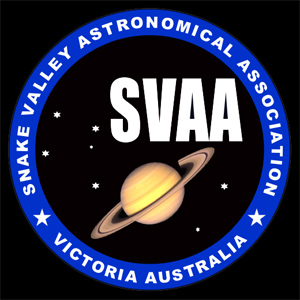
The Snake Valley Astronomical Association (SVAA) is an Amateur Astronomy Club based in Snake Valley, Victoria, Australia. Established in 2005, membership of the SVAA is open to people with an interest in any form of astronomy. The SVAA currently has around 30 members.
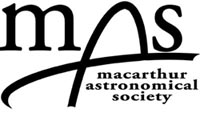
Macarthur Astronomical Society is an organisation of amateur astronomers, based in the Macarthur Region of outer South Western Sydney, New South Wales, Australia.

The Astronomical Society of Glasgow (ASG) was founded in 1954 in Glasgow, Scotland, by amateur astronomers and is dedicated to promoting an interest in Astronomy.
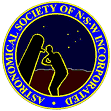
The Astronomical Society of New South Wales (ASNSW) is an amateur astronomy club in the state of New South Wales, Australia, founded in 1954.

The Astronomical Society of Victoria (ASV) is an amateur astronomy club in the state of Victoria, Australia. It was founded in 1922, making it one of the oldest such clubs in the country, and with some 1500 members it claims to be one of the largest amateur astronomy organisations in the southern hemisphere. Membership is open to all with an interest in astronomy, and the society caters for people with a wide range of ages, backgrounds, abilities and interests.
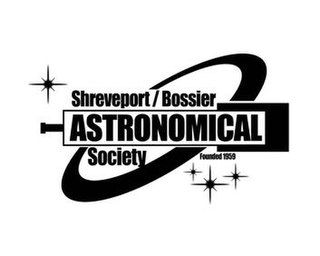
The Shreveport-Bossier Astronomical Society, Inc. is a 501(c)(3) tax-exempt organization and one of the oldest continuously meeting astronomy clubs in the United States of America. Originally named the Shreveport Junior Astronomical Society, it was founded in 1959 by a group of high school students led by a fellow student, Sara Worley. Fifteen people attended an organizational meeting to establish a club on October 10, 1959. Officers were elected at this meeting and Sara Worley became the first president of the Shreveport Junior Astronomical Society. A second organizational meeting took place on October 17, 1959, where a constitution and additional society-related details were established. The constitution was approved, signed, and ratified at a third meeting on October 24, 1959, although there was no State of Louisiana charter. The first public meeting of the club was held on November 14, 1959 at Centenary College of Louisiana. Two goals were announced: build an observatory and procure a planetarium for the Shreveport area. Within five years, these two goals were accomplished through local participation and fundraising.
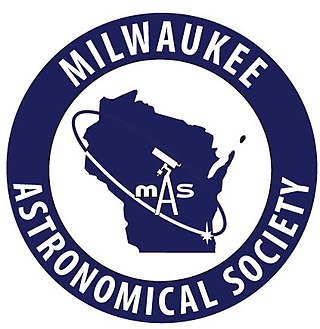
The Milwaukee Astronomical Society (MAS) is a 501(c)(3) tax-exempt organization serving amateur astronomers in the greater Milwaukee area since 1932, making it one of the oldest continuously running astronomy clubs in the nation. The MAS operates an observatory, one of the largest amateur club observatories in the world. The current membership is 270.














